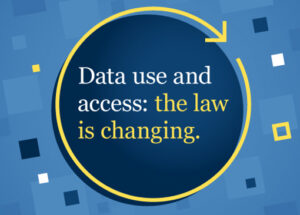
Expanding your IT infrastructure
–
As businesses grow, their IT infrastructure and support needs can expand beyond some simple file-sharing and office software into more complex, managed networks and systems. Expanding your IT infrastructure when you’re not an IT expert can be challenging, even intimidating. But by planning it out, and identifying the clear objectives and actions required – and the expert support you need to deliver – it can be manageable. Here, we’ve outlined the key steps to help you navigate the expansion of your IT infrastructure:
–

–
Define your IT needs and goals
Start by clearly identifying the IT needs and goals associated with your expansion. Why do you need to change your set-up? What are the benefits that it will bring in terms of quality of service, efficiencies, cost savings, etc? Consider what specific IT resources, such as additional servers, storage, or software, are required to support these goals – seeking advice if you’re not sure.
Seek professional advice
Even if you are a digital native, creating or expanding IT systems and networks remains a specialist area. Consult with IT experts or consultants who can assess your current IT infrastructure, understand your business goals, and provide recommendations for how you could achieve them. They can help you develop a scalable and cost-effective IT plan.
Work out your budget
Create a budget that outlines the costs associated with expanding your IT infrastructure. This budget should include expenses for hardware, software licenses and costs, IT personnel (including consultants or contractors to deliver the upgrade), and any ongoing maintenance and support.
Ensure you can keep scaling up
When planning your expansion, think of it in terms of longer-term growth, not trying to meet a set number of staff or capacity. Work with experts to find IT solutions that are scalable and can grow with your business. That way, you can have confidence about expanding your infrastructure as needed without significant (and potentially expensive) disruption in the future.
Consider cloud-based solutions
You don’t necessarily need large network servers in your office, or a bespoke software solution for your business. Make use of the rapid growth in cloud-based services and computing to offload some IT responsibilities to reputable providers. Cloud solutions offer scalability, flexibility, and (often) reduced costs, making them suitable for many business needs.
Selecting your IT providers
Research carefully (working with an expert as needed) to select reliable providers for your hardware, software, and services needs. Make use of professional reviews and feedback from other businesses in the same sector. Unless you are looking for a very bespoke, industry-specific product, you will usually have a wide variety of providers to select from.
Data security and back-up
The opportunities from bringing in new technology also brings in new risks to consider. Make sure a full risk assessment is conducted, and continue to make data security a priority. Implement robust cyber security measures (you may wish to consider Cyber Essentials accreditation as both a useful process to audit and create an action plan, as well as publicly certifying your own security credentials) and ensure you have a plan to back-up all data. As part of this, ensure you have documented your IT infrastructure, configurations, and processes. This documentation will be invaluable for referring to in the future, both when fixing problems or planning for further expansion.
Testing and quality assurance
Before implementing new IT equipment or software, be sure to conduct thorough testing and quality assurance to both identify and give the opportunity to fix any issues or glitches. If you haven’t already, ensure that your new equipment complies with relevant regulations and industry standards – particularly if being assured of this will be of value to customers. Conduct audits or assessments to verify compliance where necessary.
Monitoring and ongoing review
After going live with your new expanded infrastructure, implement monitoring tools to track its performance. This will also allow you to identify and address performance bottlenecks or issues.
After the expansion is complete, hold a review with your key staff to assess whether the goals and objectives were met and what lessons can be learned for future projects. Make sure you have a plan for ongoing maintenance, support, and the necessary updates to keep your expanded IT infrastructure running smoothly and securely.
Don’t hesitate to seek expert advice when necessary if you are uncertain about how to proceed. Plan properly, and you can successfully expand your IT infrastructure to enable your business to grow and enjoy IT performance that meets your needs.
Learn more
Find out about managing new equipment and software for staff
See what IT training is available to help upskill your workforce
–

–
Steps into Digital: Voucher Scheme
Benefit from a bespoke approach to digital transformation, accessible and manageable to all at any level. Providers will collaborate with business's on a one-to-one basis, delivering tailored support that aligns with specific digital needs and objectives.
Steps into Digital: Data Analytics for Smarter Decisions Workshop Series
This nine part workshop series is designed to help businesses at every stage of their data journey from those just starting out to those ready to explore artificial intelligence and compliance. Each session is practical, jargon free and grounded in real business use cases, ensuring participants leave with tools and knowledge they can apply immediately.
Steps into Digital Programme
The Steps into Digital programme focusses on strategic, guided steps toward adopting the right digital tools and practices for your business. Emphasising a supportive, paced approach to digital transformation, accessible and manageable to all at any level.
UK organisations stand to benefit from new data protection laws
The Data (Use and Access) Act 2025 (DUAA) has now received Royal Assent. This new legislation updates key aspects of data protection law, making it easier for UK businesses to protect people’s personal information while growing and innovating their products and services.
YorkshireX: AI Adoption Programme
Research from the British Chamber of Commerce tells us that although over 40% of companies believe AI will increase their productivity, only 25% are actively using it. This AI Adoption programme is here to help fill the gap.
York and North Yorkshire Businesses Take First Steps in AI
Business leaders gathered in York last week for a sold-out event to take their first steps in AI. Edemystified the fast-moving world of AI and machine learning, while inspiring local entrepreneurs to make their businesses more efficient and competitive with these technologies.
How to create a profitable website and generate leads
Learn how to create a profitable website that can serve as a powerful tool to attract customers, generate leads, and increase revenue.
Why Business Continuity is Important
Preparing for the challenges a business might come up against when times get tough can seem like a mammoth task. You want to protect your business and guarantee that it
The benefits of choosing local IT support in North Yorkshire
IT is integral to the inner workings of most businesses and good IT support is something that even small businesses in North Yorkshire may need to rely on at some
How to save time on business admin
Many business owners are frustrated by the amount of time they have to spend on business admin.
Customer relationship management tools
There are lots of great customer relationship management (CRM) tools out there that you could use in your business.
Ten questions to ask a website designer
A high-quality website is a vital piece of your overall marketing puzzle.
Webinar Recording: Cookies and privacy notices, do I need them on my website?
This webinar will cover what cookies are and what cookie law is, what a privacy notice is, the laws surrounding both, and how to ensure you are being transparent to your customers when creating a cookie policy and privacy notice.
Featured Webinar Playlist: Digital skills
Learn how to engage with social media to boost visibility, generate leads and customer engagement online, and stay safe online whilst doing business with our free digital skills webinar playlist.
Free Webinar :Getting started with data protection: what every business needs to know
This webinar will take a simple look at some of the practical measures a business needs to put in place to help them comply with their UK GDPR obligations.
Made Smarter
If you’re a manufacturer looking to grow through the use of technology, the Made Smarter programme could help you access advice, support and grant funding.
















